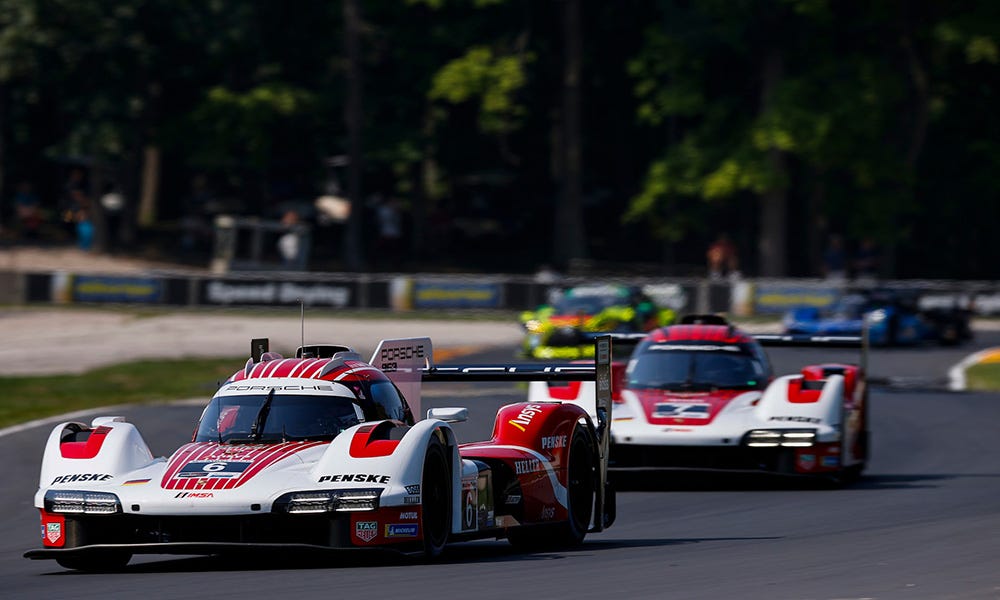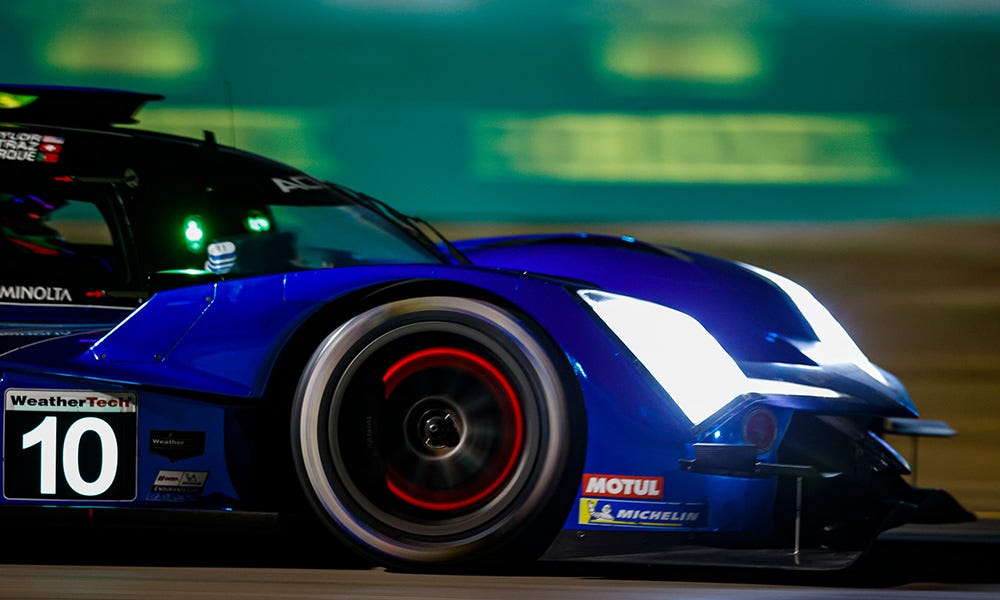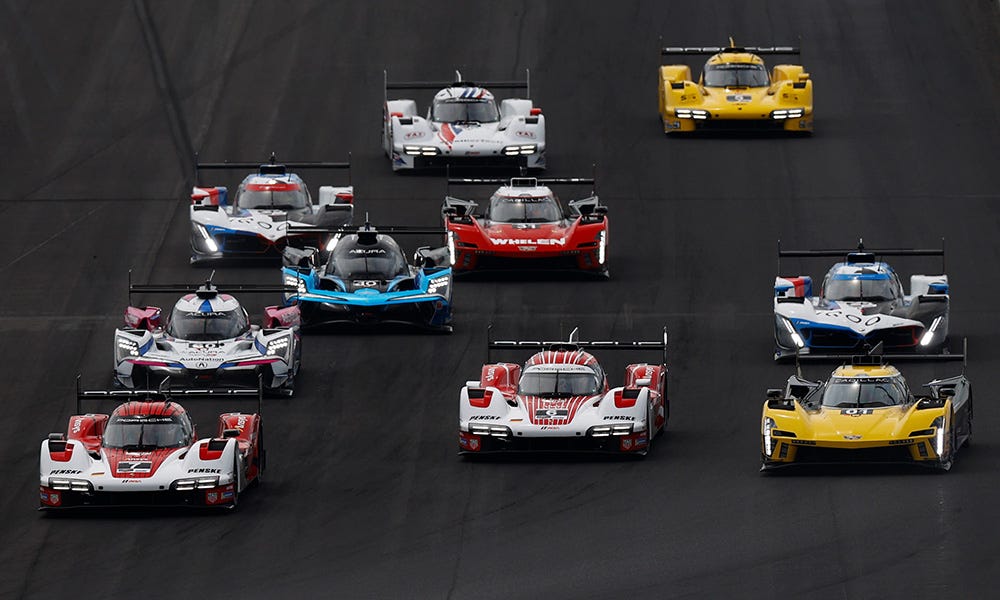Insight: More to Come from IMSA GTP as First Season Wraps Up
LMDh manufacturers weigh in on platform's progress ahead of this weekend's WeatherTech Championship season-ending Motul Petit Le Mans...
This weekend’s Motul Petit Le Mans marks the end of the first season of IMSA’s new GTP class, a formula based on the LMDh ruleset that’s been years in the making between the North American sanctioning body, the ACO and FIA.
The highly anticipated ruleset has delivered close and exciting racing in the WeatherTech SportsCar Championship, while also having been introduced into the FIA World Endurance Championship, as part of global prototype convergence, with arguably mixed results against the incumbent Le Mans Hypercar platform.
With all four LMDh manufacturer launch partners — Acura, BMW, Cadillac and Porsche — having hit the track with their prototypes for the first time in 2022 ahead of January’s highly anticipated Rolex 24 at Daytona, each of the OEMs agree that significant progress has been made in the 257 days since the season opener, but with further developments still to come.
"Because of the short time to market that we had on this program, in the end, we arrived at Daytona with a car that was pretty well an unknown for us,” explains BMW LMDh project leader Maurizio Leschiutta. "We were learning through each practice, qualifying and race. This is true of all of the races this year.
“If I were to compare our car today with the car we had a year ago in testing, I would say it was significantly improved. I'm sure we have a lot more to learn and that's what we're working on.
While BMW was the final of the launch manufacturers to hit the ground in testing in July 2022, Porsche had the biggest jump start, with its Multimatic-chassied Porsche 963 beginning testing a full year before its race debut. However, the German manufacturer was affected the most with reliability issues early on, most notably linked to the spec hybrid powertrain system developed by Bosch, WAE and Xtrac.
"The car has developed a lot, especially in our case in terms of reliability,” says Porsche LMDh factory director Urs Kuratle. “But in terms of Porsche, the team in IMSA has developed a lot, so all of the operations, which was brand new for us at the beginning of the year, it's much more settled down now and that's probably the biggest improvement we've had.
"On top of it, it's not only the team in the U.S. but it's the whole [partnership] we have with our partner Multimatic and our two-championship entry, that developed a lot over the course of the year.”
Cadillac, which along with Porsche has undertaken dual championship programs by fielding cars in the WEC in parallel, had a stronger start but also overcame early development hurdles according to GM’s motorsports competition engineering director Mark Stielow.
"Our car ran for the first time 16 months ago,” he recalls. “To say we had some teething pains early on is an understatement and I echo other people's comments about the supply chain.
"The car and the team, we've learned a lot. We've come a long ways this year. Everybody stepped up their game throughout the course of the season. There's still more to be learned and still more things to be developed on the car. Overall I'm pleased with the development of where we're going and of how far we've come"
Having scored a 1-2 finish in the Rolex 24, Acura was arguably the most successful of the four manufacturers at the start but has seen the other three OEMs catch up throughout the highly competitive season.
"Coming out the back of COVID, so to speak… the hybrid suppliers had a mountain to climb. We had a mountain to climb. Our chassis people had a mountain to climb and IMSA had a mountain to climb,” says Honda Performance Development President and technical director David Salters.
"I think the cars have come on a lot. They're quite interesting cars; they're really interesting for our engineers to work on. We find stuff out all the time. Having an open software and stuff in the cars is really smart. It's relevant, it's interesting and not so expensive, etc.
"We've learned a lot about the cars and are still learning. You try and balance it. When you're making a new car you try to leave the development to the last minute to get all your good stuff in, because we're all greedy and optimistic, fundamentally. The car is still developing. We've learned a lot. But it's stabilizing now, I suspect, but we'll see."
Salters predicts that further gains will still be made with the platform moving forward.
“I'm sure [we’ll make progress on] the chassis stuff that we don't fully understand,” he says. “Tires and people work on them forever and then there's powertrain stuff and software and things that we probably haven't thought of yet.
"I'm sure it's less gains than it has been because it was a new car and we've raced it quite a lot now. It will be less but this business is always about the accumulation of marginal gains. So you look across all the bits and see what you can add it up. That's why we get up in the morning."
GM’s Stielow adds: "The gains are going to be smaller and smaller. This year, 2023, we found the biggest gains. As we learned more about the car and learned more about the platform, it enabled us to dig further down on things to work on.
"We will find some more speed in the car but everybody does… We've got a long ways to go yet but we're still grinding on things and software is going to be a big opportunity."
Out of the four initial LMDh manufacturers, Porsche is known to be working on reliability-related updates to its car for next year, which could move the bar forward for the 963 effort, which currently features the only customer LMDh program out of the four manufacturers.
But can the platform take an even further step during the off-season? It’s a question both Kuratle and BMW’s Leschiutta have raised.
"We would love to know what our potential is and would also love to know what the others' potential is, obviously,” Kuratle says. “The governance bodies also would like to know how far we could go because it's a BoP-related question as well.”
"You don't know how far you're away from your target until you know where your target is,” Leschiutta says. “Today, to say that we know the ultimate potential of this car, I don't think we do.
"We're still on a very steep part of the learning curve. Because it is a complex car… I don't think we've explored the full potential for sure. We'll continue to see people making gains. They won't be such big gains as perhaps we saw from last year to this year but we'll continue to make gains and get better and better."
With new LMDh programs from Lamborghini and Alpine set to come online next year, with the Italian manufacturer joining the WeatherTech Championship for a partial Michelin Endurance Cup program, there will be even more excitement and variables at play for Year 2 of the platform.
Photos: Mike Levitt/IMSA & Jake Galstad/IMSA







